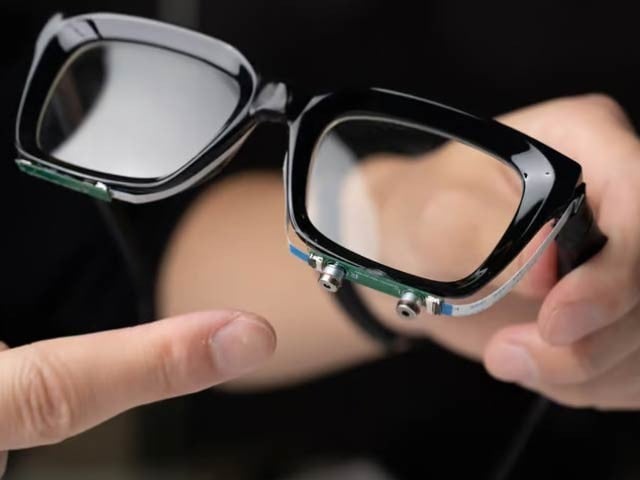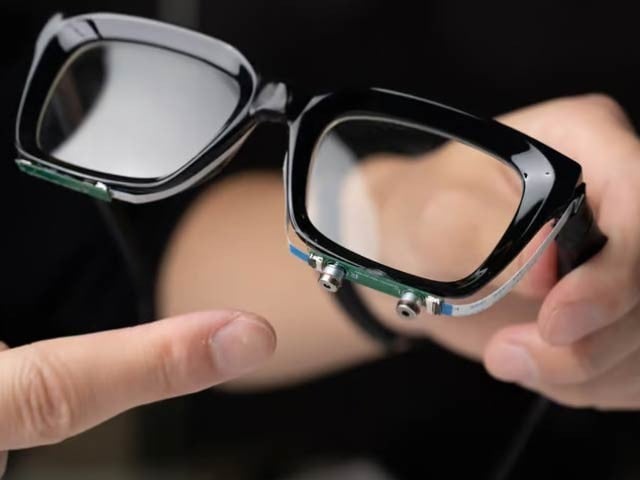
Scientists at Cornell University have created a lens that can read spoken words from noisy and deaf people using lip movements. Photo: Courtesy of Cornell University
Athika, New York: Some people are speechless but can utter words by slurring their lips. Similarly, people’s voices are not heard even in very noisy places. Now this situation can be solved with a revolutionary lens that uses sonar technology.
Experimentally, this lens has been developed by the Smart Computer Speech Interface Laboratory (Sci-Fi Lab) at Cornell University. At the bottom of the frame of the glasses are two very small speakers, as well as two thin but sensitive microphones. Speakers emit sound waves that are inaudible to the person speaking. But she bounces back against the speaker’s mouth again and reaches for the mic.
Now in the case of echo (return), when the sound reaches the sensitive microphone, an algorithm inside the lens sends it wirelessly to the smartphone. Now here the software algorithm reads the spoken words from the lip movements.
It currently understands 31 types of words and instructions with 95% accuracy and communicates its voice to the viewer. Interestingly, the software only requires a few minutes of training. All that has to be done is that the speech-impaired person has to come forward and say a few words. Similarly, with continuous training it can learn more words.
The lens can last up to ten minutes on a single charge. However, camera lenses have also been developed that only work for 30 minutes on a single charge.
(function(d, s, id){
var js, fjs = d.getElementsByTagName(s)[0];
if (d.getElementById(id)) {return;}
js = d.createElement(s); js.id = id;
js.src = “//connect.facebook.net/en_US/sdk.js#xfbml=1&version=v2.3&appId=770767426360150”;
fjs.parentNode.insertBefore(js, fjs);
}(document, ‘script’, ‘facebook-jssdk’));
(function(d, s, id) {
var js, fjs = d.getElementsByTagName(s)[0];
if (d.getElementById(id)) return;
js = d.createElement(s); js.id = id;
js.src = “//connect.facebook.net/en_GB/sdk.js#xfbml=1&version=v2.7”;
fjs.parentNode.insertBefore(js, fjs);
}(document, ‘script’, ‘facebook-jssdk’));



